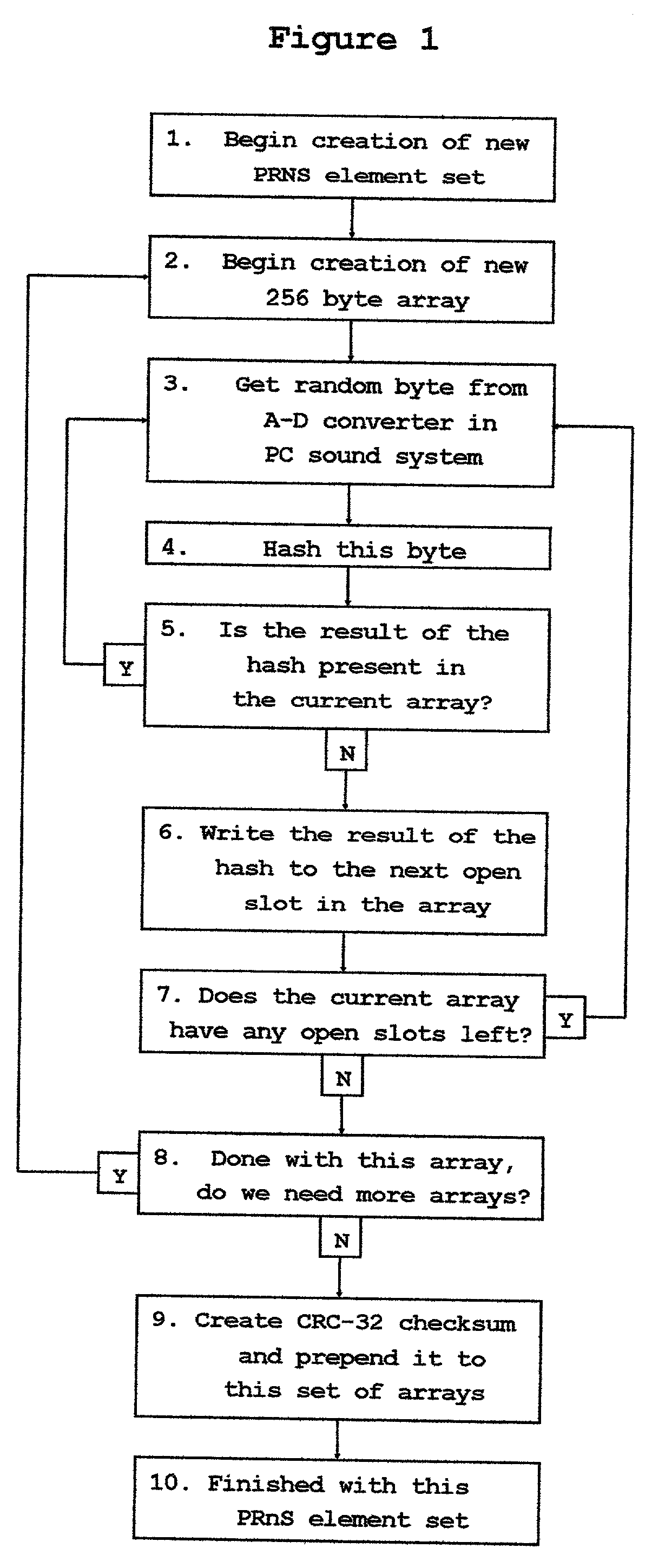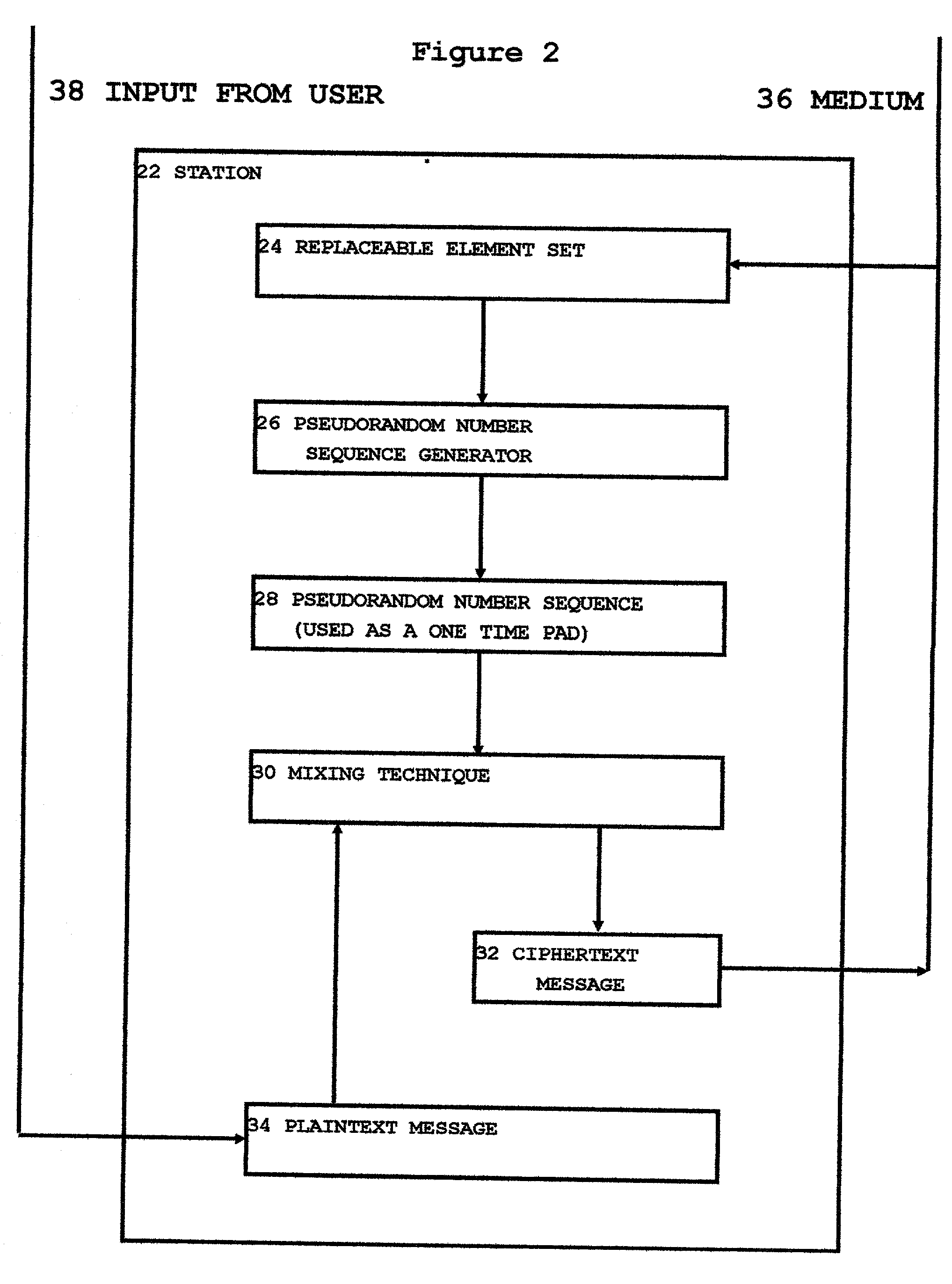Cryptographic one time pad technique
a one-time pad and encryption technology, applied in the field of encryption, can solve the problems of unbreakable cipher, inability to re-key, and general consideration of pad as compromised
- Summary
- Abstract
- Description
- Claims
- Application Information
AI Technical Summary
Benefits of technology
Problems solved by technology
Method used
Image
Examples
Embodiment Construction
[0067] The invention will be described here first as a set of separate logical elements, then a description will be provided of the invention as a whole. The separate logical elements are as follows:
[0068] A. Description of a possible implementation of the PRNS generator.
[0069] B. Description of a possible implementation of a key generator for use in the implementation of the PRNS generator described in 1. above.
[0070] C. Description of a possible technique for the creation of a set of new and unique set of PRNS elements for use in the implementation of the PRNS generator described in 1. above.
[0071] D. Description of a possible implementation of message encipherment.
[0072] E. Description of a possible implementation of message decipherment which is interoperable with the encipherment technique described in D. above.
[0073] F. Description of a possible implementation of a technique used to transfer PRNS elements from one network station to another network station.
[0074] Each station ...
PUM
 Login to View More
Login to View More Abstract
Description
Claims
Application Information
 Login to View More
Login to View More - R&D
- Intellectual Property
- Life Sciences
- Materials
- Tech Scout
- Unparalleled Data Quality
- Higher Quality Content
- 60% Fewer Hallucinations
Browse by: Latest US Patents, China's latest patents, Technical Efficacy Thesaurus, Application Domain, Technology Topic, Popular Technical Reports.
© 2025 PatSnap. All rights reserved.Legal|Privacy policy|Modern Slavery Act Transparency Statement|Sitemap|About US| Contact US: help@patsnap.com



